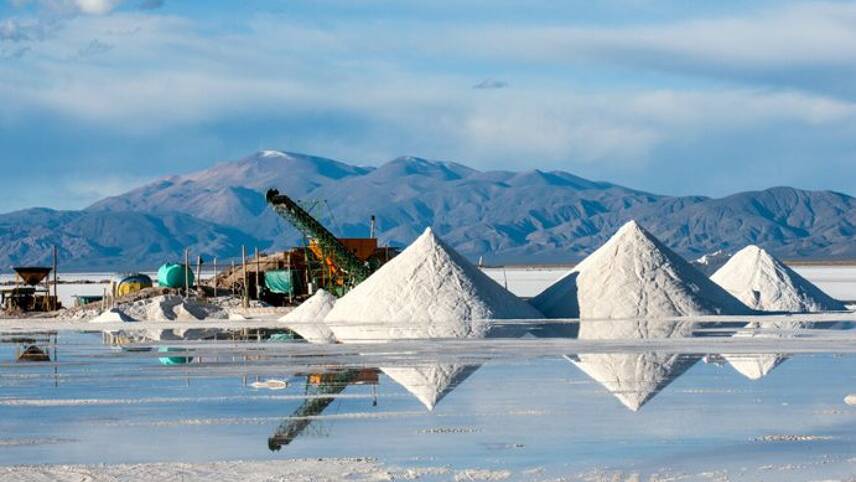Register for free and continue reading
Join our growing army of changemakers and get unlimited access to our premium content

Pictured: Lithium mine at Salinas Grandes salt desert
The first annual IEA Critical Minerals Market Review, released on Tuesday (11 July) along with a new online data explorer, has confirmed that growth in clean energy solutions has created a 70% increase in demand for cobalt and a 40% rise in the demand for nickel compared to 2017 levels. These are just two of the minerals deemed critical for energy-related technologies like electric vehicles (EVs) and offshore wind.
The market for energy transition minerals reached $320bn in 2022, the IEA notes, and will continue to grow “rapidly”. Indeed, investment in critical mineral development rose 30% last year, following a 20% increase in 2021.
The IEA report moves to ease concerns that the energy transition will suffer from limited resources, stating that if all planned critical mineral projects worldwide are realised, there would be enough supply to support current climate pledges from Governments.
The report does warn, however, of risks regarding project delays and some technology-specific shortfalls. More projects would still be required by 2030 in order to align with the 1.5C ambition of the Paris Agreement, as national pledges are not on course to meet that aim.
“At a pivotal moment for clean energy transitions worldwide, we are encouraged by the rapid growth in the market for critical minerals, which are crucial for the world to achieve its energy and climate goals,” IEA’s executive director Fatih Birol said.
“Even so, major challenges remain. Much more needs to be done to ensure supply chains for critical minerals are secure and sustainable. The IEA will continue its early leadership in this space with cutting-edge research and analysis – and by bringing together governments, companies and other stakeholders to drive progress, notably at our Critical Minerals and Clean Energy Summit on 28 September.”
Critical concerns
Currently, supply chains for these materials are volatile, complex and often linked to environmental degradation, with just a few counties – namely China – accounting for the bulk of the production.
The IEA also warns that the ESG practices associated with the sector are “mixed”. Companies are investing more in worker safety and gender balance, for example, but emissions from practices are roughly the same year-on-year, while water withdrawals have almost doubled compared to 2018 levels.
Experts believe there is not enough cobalt in the world to replace every working petrol or diesel vehicle on the roads with fully electric alternatives. Moreover, batteries are typically warrantied for less than 15 years and considered hard to recycle, even though they contain high proportions of recyclable and high-value metals. The good news is that the likes of BMW, Nissan and Formula E are beginning to invest heavily in more circular battery products and systems, and that startups in this space are continuing to innovate.
Elsewhere, there are growing calls for automakers and technology firms to pre-emptively move away from companies involved in deep-sea mining, which is used to source key minerals. As well as destroying fragile marine habitats, deep-sea mining also impacts the oceans’ ability to absorb and sequester carbon, which in turn exacerbates the climate crisis.
Some minerals are often subject to mining or trading that is often associated with violations of environmental and social standards. Tungsten is an example of this. It is found not just in the vibration alarm of mobile phones and light bulb filaments, but also in the drill and milling bits of industrial machinery used in producing cars.
With the production of critical minerals expected to rise by as much as 500% by 2050, the UK Government is keen to grab a slice of this evolving market.
Last year, the UK Government unveiled a strategy aimed at bolstering the resilience of supply chains for critical minerals that will underpin growing green industries.
The strategy outlines plans to accelerate the nation’s domestic capabilities of sourcing and refining these minerals, while also collaborating with existing and emerging international markets.


Please login or Register to leave a comment.